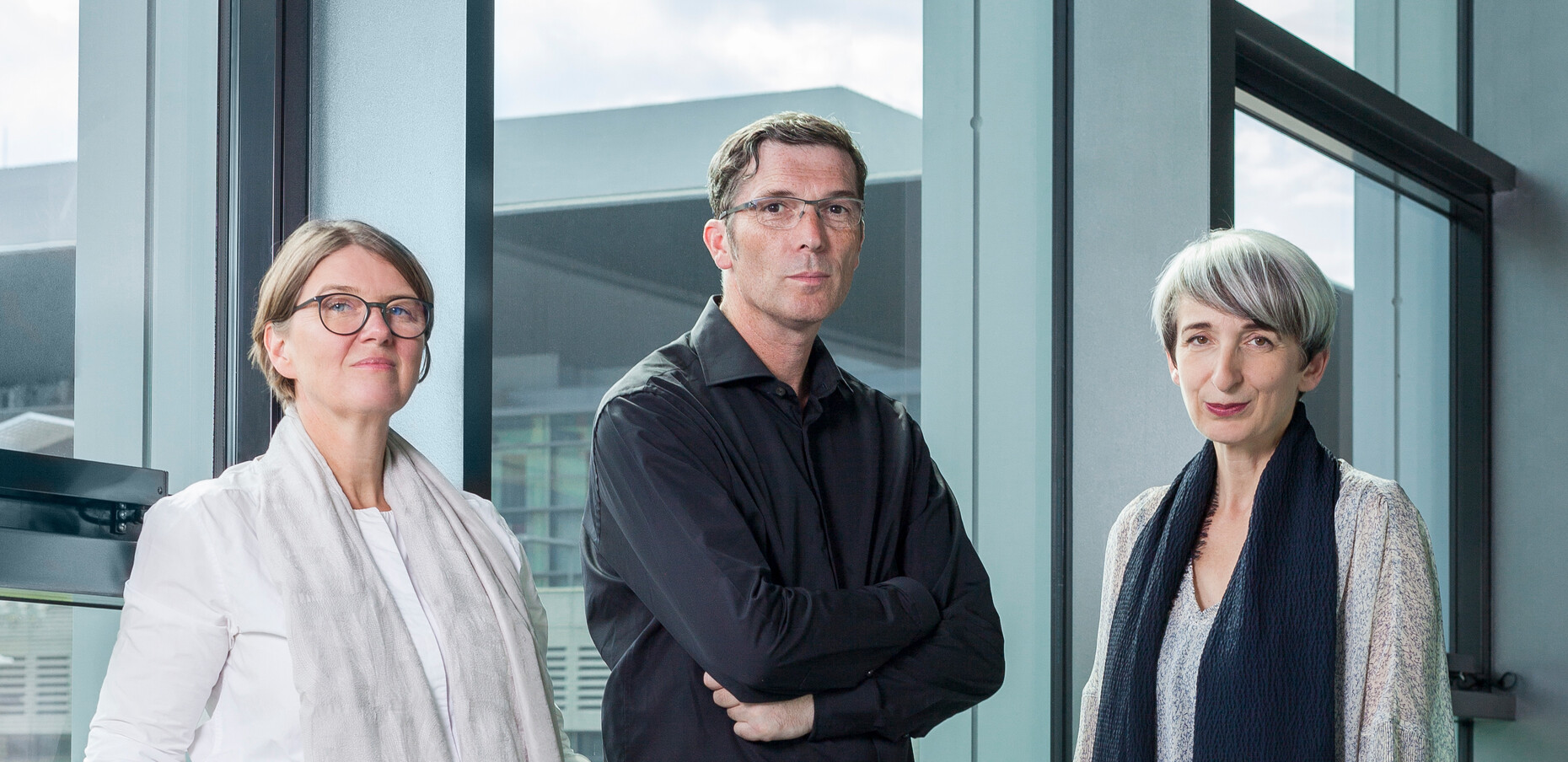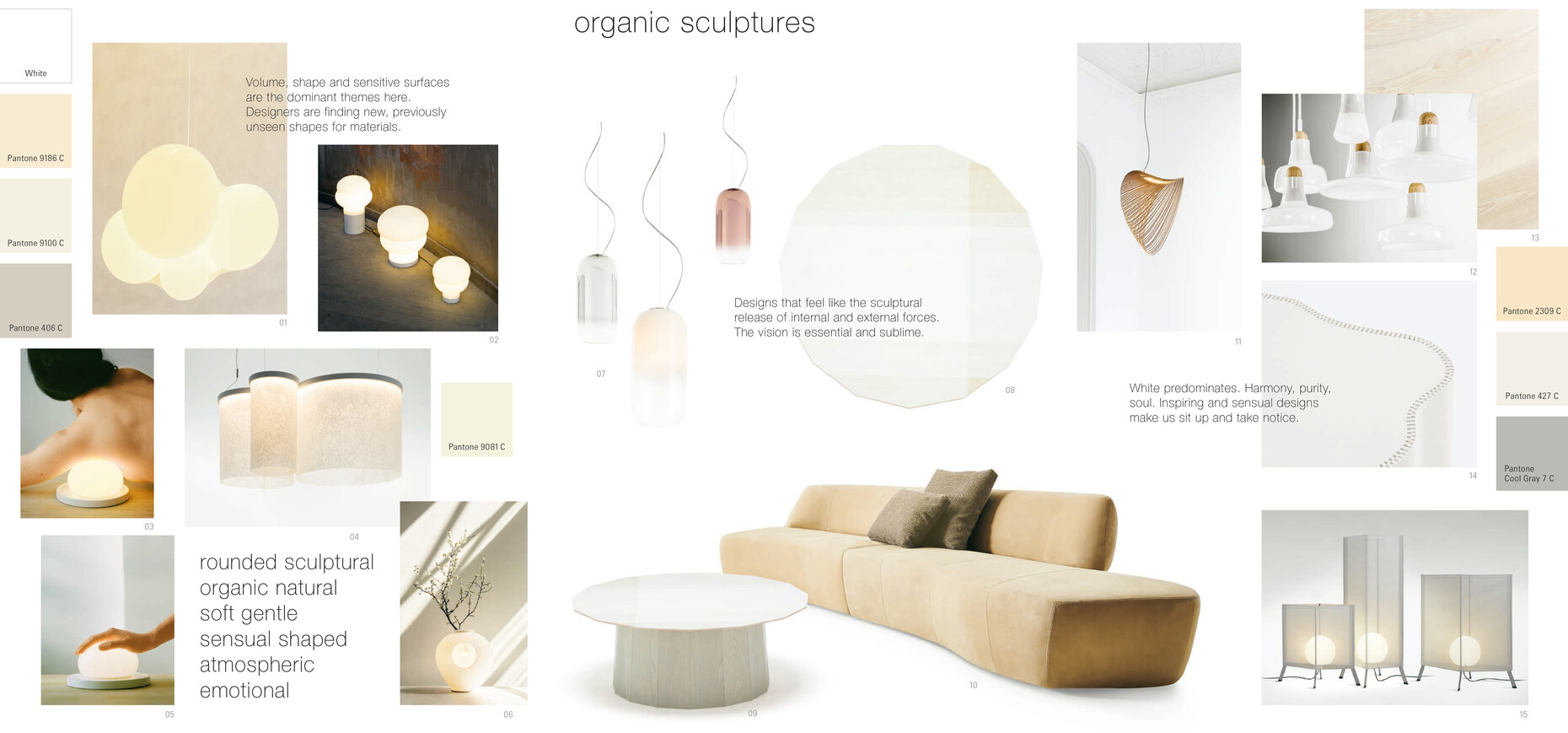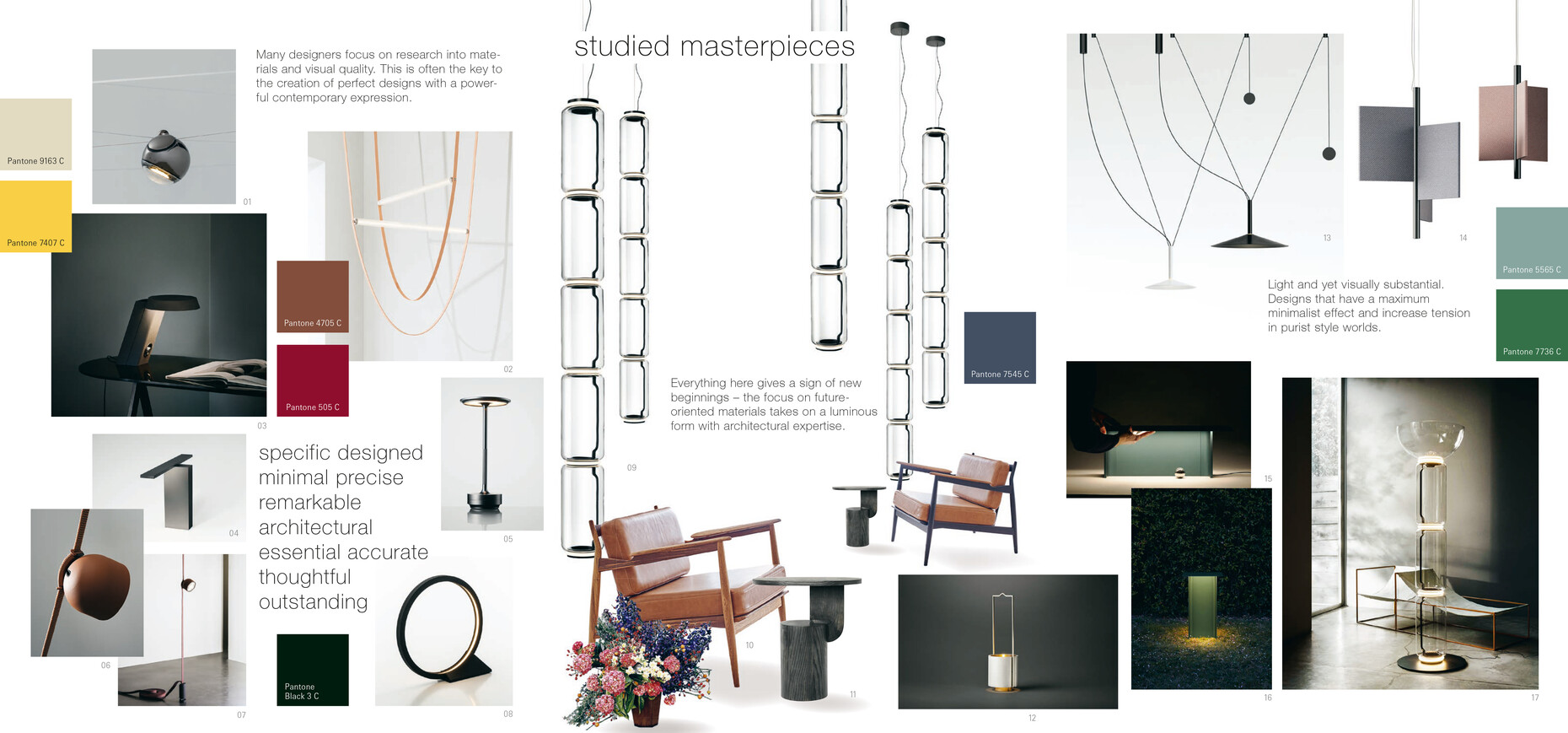A masterpiece of collage
We meet Annetta Palmisano and Claudia Herke in their Frankfurt studio. For more than ten years now, the two designers have been together with its Berlin partner Cem Bora analyzing events and trade shows, exhibitions and everyday scenes for Light + Building, one of the world’s leading trade fairs. There is almost nothing they consider irrelevant there. “Because we can’t not keep track of trends and developments. Our ‘trend goggles’ are always on,” explains Annetta Palmisano with a chuckle, adding: “We observe and categorize what we’ve seen, but we don’t evaluate it.” For this year’s fair too, Annetta Palmisano, Claudia Herke and Cem Bora are summarizing the essence of the current developments in the industry and making them tangible. We take a sneak peek at this year’s Trendforum at Light + Building 2020.
It often takes longer than two years for a product to develop from the initial idea to the finished product. Is it not difficult with these sorts of development cycles to identify new trends every two years? What’s your approach?
Annetta Palmisano: We observe product design, architecture and industrial design and analyze and sort what we have seen. From this, we derive patterns and developments which, when bundled together, then represent trends. Of course, we’re also interested in sociocultural trends, but we try to shape our trends so they are very much in touch with the market. So rather than “developing” trends, what we’re really doing is depicting them.
Claudia Herke: Furniture design is a key factor in our work on the trend themes of Light + Building: Formal idiom, finishes, material trends and coincidences of course all influence luminaire design. Hence, in the Trendforum at Light + Building 2020 we are also showing interior trends, because the setting is very important to the impact the light makes.
What trends do you foresee for 2020 and how do these differ from one another?
Annetta Palmisano: This year we are focusing on three very different developments: “Organic Sculptures”, “Studied Masterpieces” and “Inventive Collages”. Let’s start with Organic Sculptures: We noticed that there are a lot of round, squat, plump shapes – in both furniture design and home accessories. Designers are in search of the best shape for a material.
Claudia Herke: When you intensify the search for these sorts of examples, the photos and illustrations by the designers also reveal a color scheme inherent to the trend: The spaces and backgrounds are generally in white, neutral colors, meaning the shape of the objects or the lights comes to the fore. The latter generally emit light as an entire body, with the light often diffuse and soft – like the form itself, which frequently features sensorially intriguing finishes.
The two designers work with large collages, which they are continually refining meticulously: These are impressive collections of photographs, product images and materials that testify to intensive material research. We head over to the collages that describe the “Studied Masterpieces”:
Claudia Herke: This trend reveals a clear architectural thrust: All the products are defined by a carefully considered, very precisely constructed and thoroughly system-appropriate design. The colors too are very architectural: Lots of black, sometimes combined to create bold contrasts, as well as metal and a minimalistic aesthetic are all characteristic of the “Studied Masterpieces”.
Annetta Palmisano: “Studied Masterpieces” cannot be reduced merely to hard surfaces and straight lines, however. That would be too superficial. Ultimately the trend exhibits thoroughly comfortable aspects both in furniture and textiles. It’s almost like club furniture – timeless, non-decorative design. The quest for quality combines all the objects in this trend.
The third trend has been labelled “Inventive Collage”…
Annetta Palmisano: Here you can see that art has a strong influence on design. Let’s take for example the luminaires by designer Elena Salmistraro, and her “Miami” collection for Il Fanale / Torremato: The objects are complete pieces in themselves, they want to be seen and hover somewhere between objet d’art and luminaire. The functionality of the lights is not unimportant but does not come to the fore. Bright colors and optimism define the trend.
But objects somewhere between art and design have been around forever. So what’s new about this trend?
Claudia Herke: Every element, even if it appears composed, has a playful, artistic aspect. Even a functional product like a simple stool is presented like an artwork. It is a presentation of individual objects to create a complete work of art.
How can you explain this development?
Annetta Palmisano: I think one reason is the ever-closer collaboration between stylists and manufacturers and designers. It’s no longer enough just to photograph a product well. Its character is also defined by its presentation. Stylists create identities, and at the same time images are created that are perfect for dissemination in these days of Instagram. These images of course influence our ideas about living spaces – and thus also design.
What can the visitor expect from the Trendforum?
Claudia Herke: We’ve moved: The Trendforum is now located in Hall 6. 2. We have developed a striking color scheme for this new location, which helps with orientation and makes it more eye-catching. What’s more, we are integrating the Forum with the aisle to create a more spacious area. Alongside the three areas for the trends, we are also planning a café which will be used to host events and presentations.
Annetta Palmisano: A textile tape suspended from the ceiling t9o the floor creates zones for the trends and forms organic spaces displaying atmospheric usage scenarios. Each trend is presented in line with its aesthetic: Hence the bespoke furniture in “Inventive Collage”, for example, is made from artistically painted glass surfaces.
Let’s take a look ahead: What themes will be relevant to Light + Building 2026?
Annetta Palmisano: The ecological problems demand design and material alternatives and the search for innovative materials drives many designers - they concentrate on material research and solution finding. This is an important topic and will remain so.
Claudia Herke: 3D printing too will produce some exciting developments. The process is gaining momentum again and is set to become ever more relevant with regard to new materials and material-saving production.
Due to the worldwide spread of the corona virus, Light + Building will be cancelled in 2020. The next world's leading trade fair for lighting and building services technology will take place in Frankfurt am Main from 13 to 18 March 2022.











